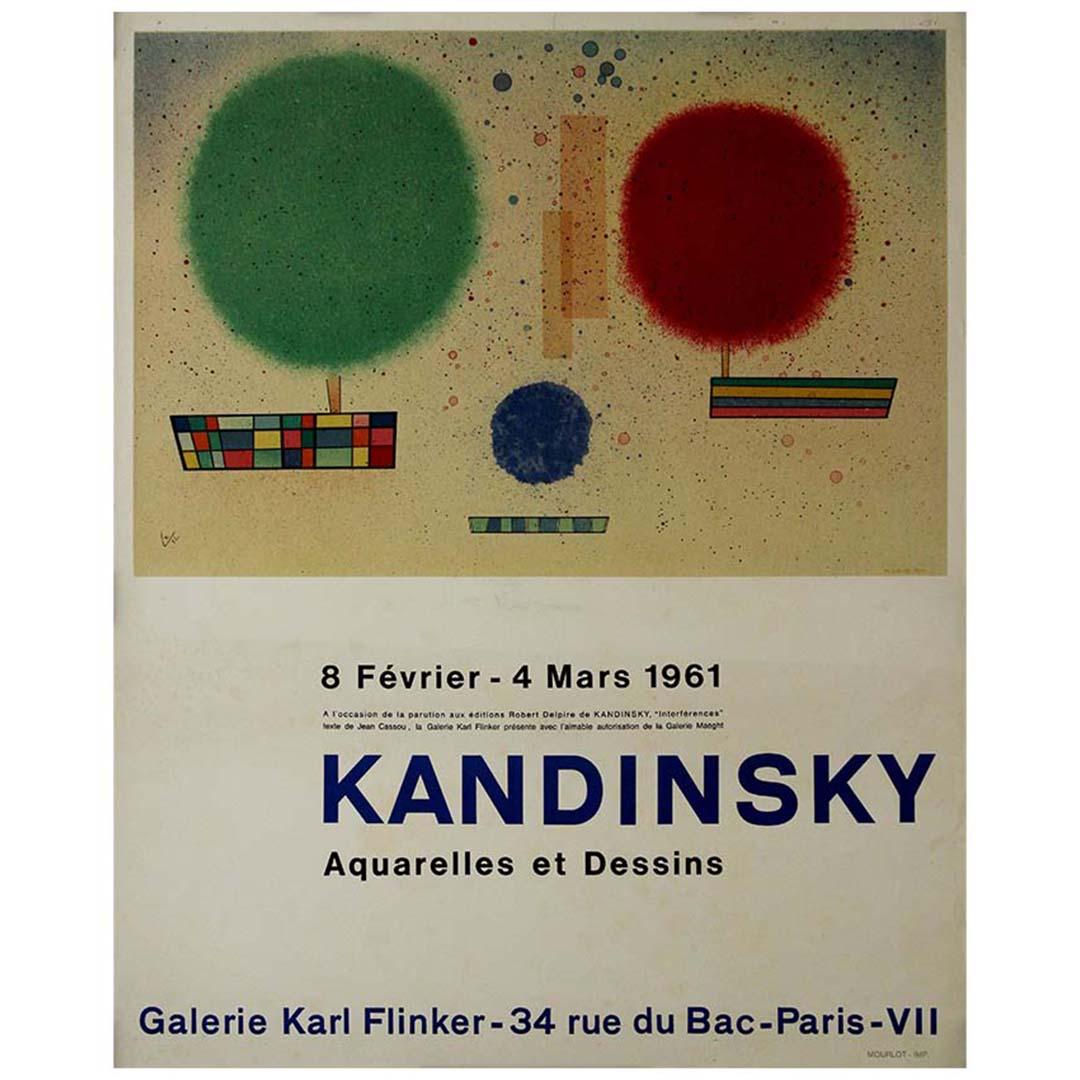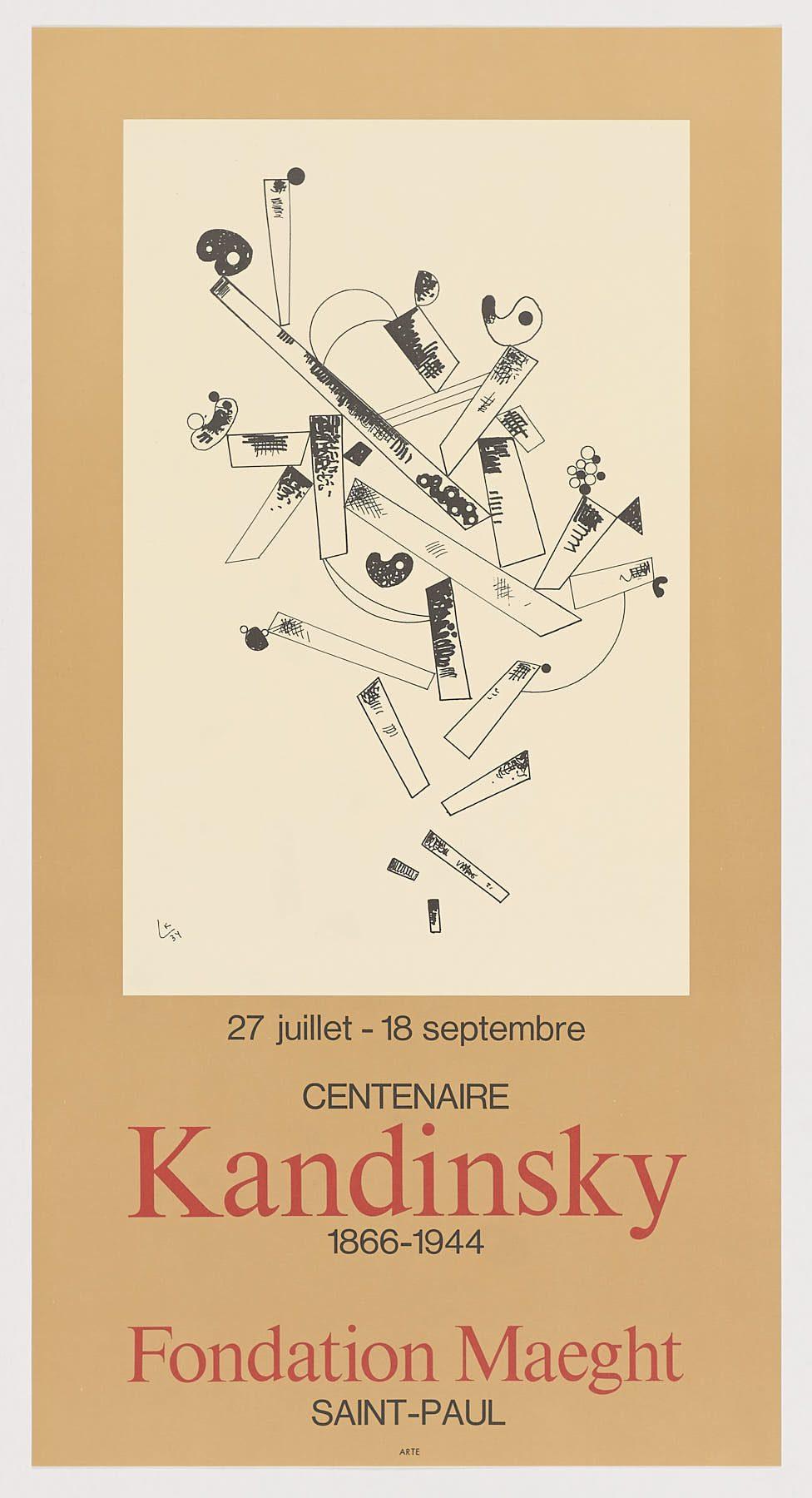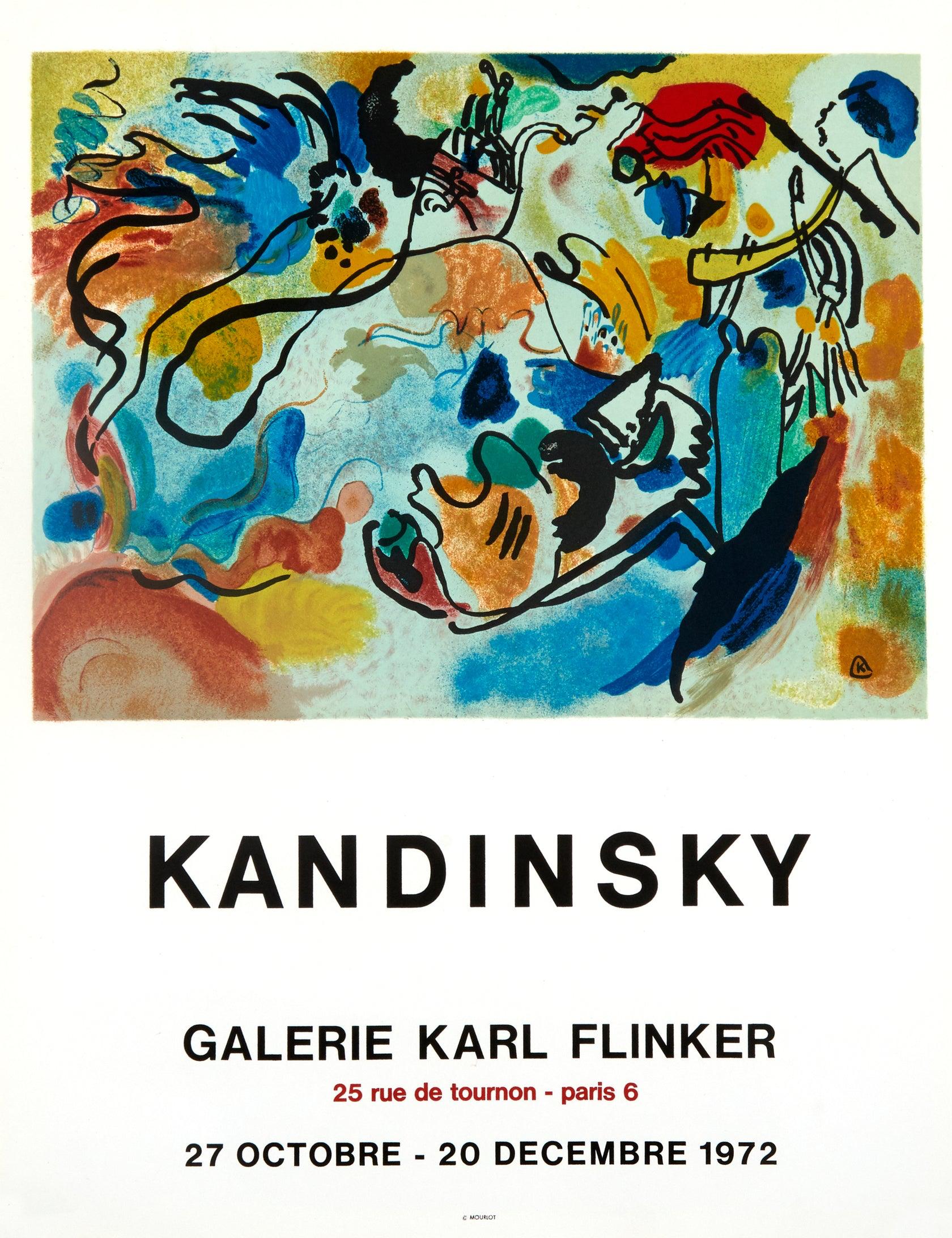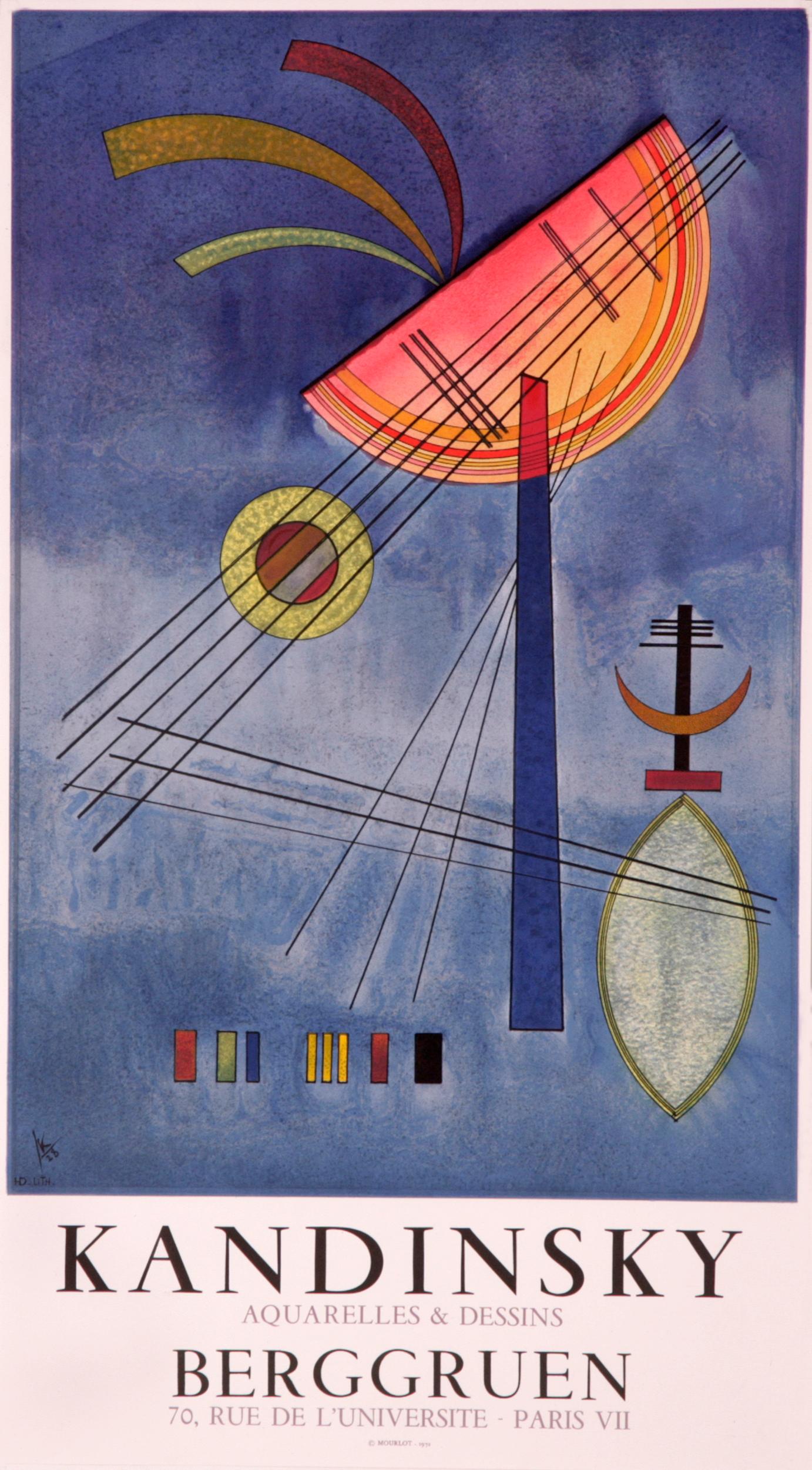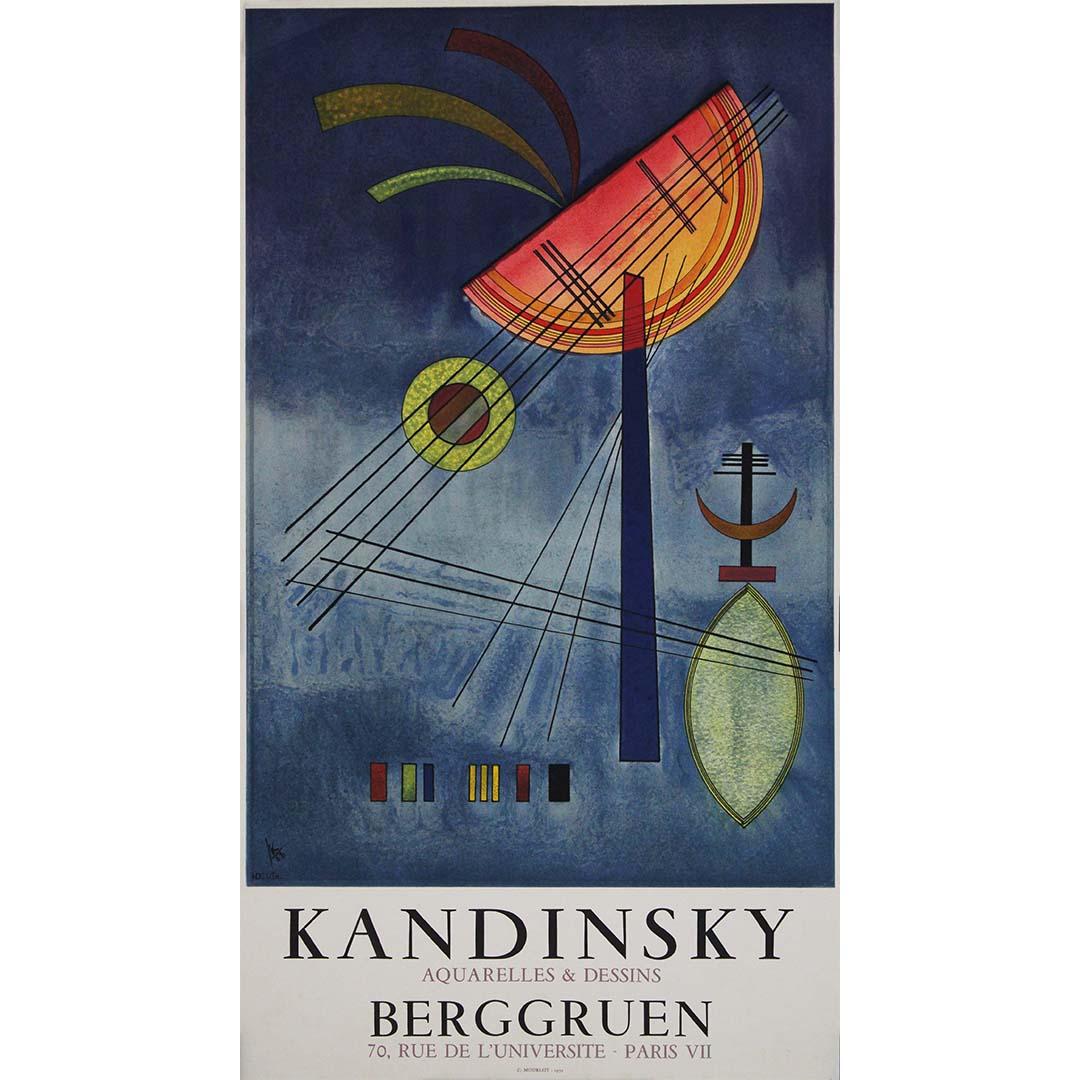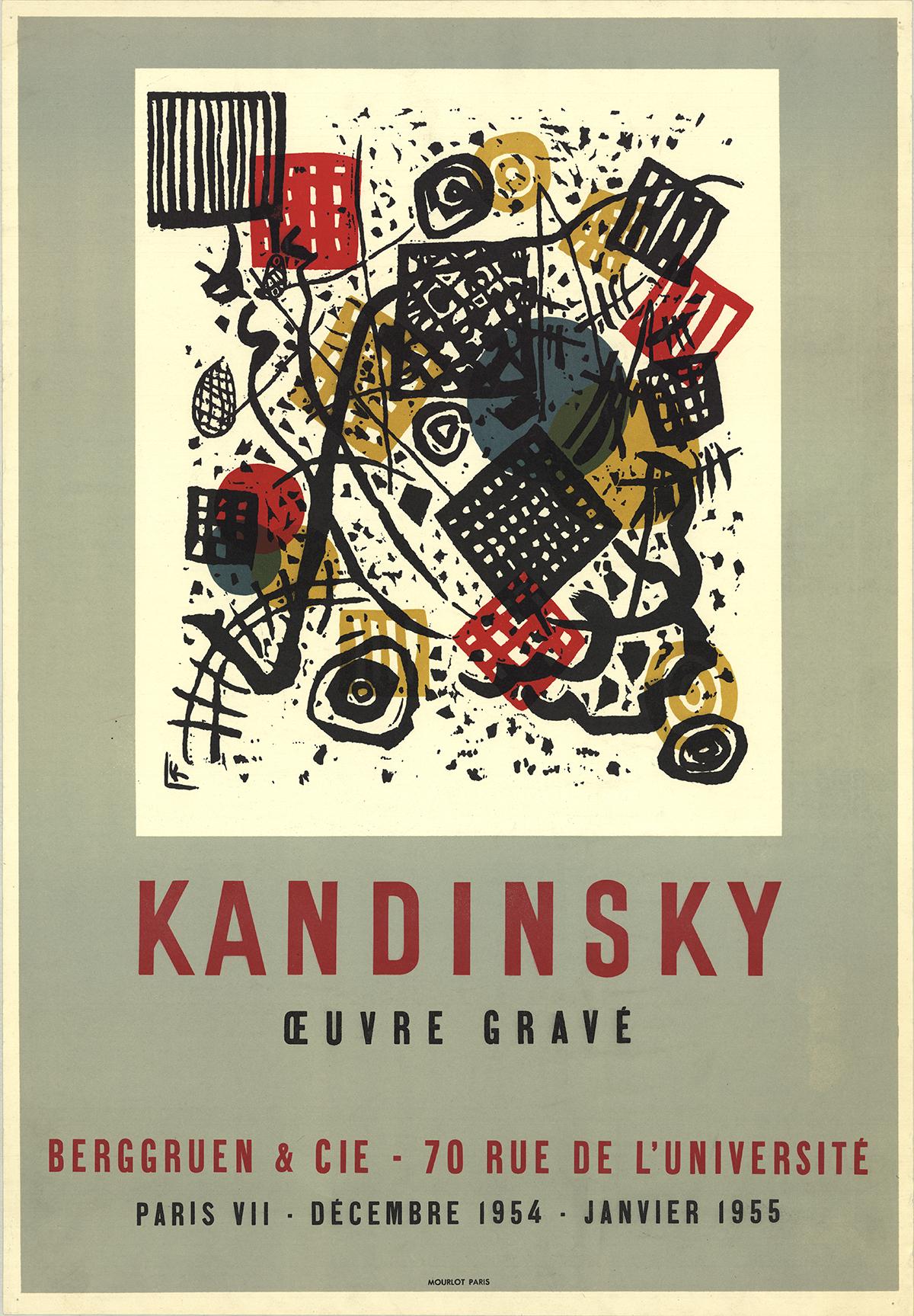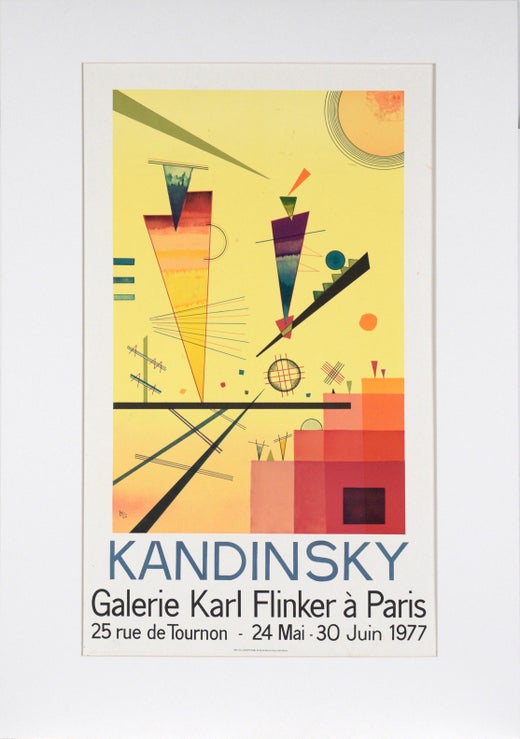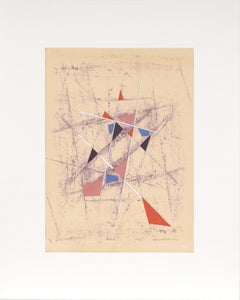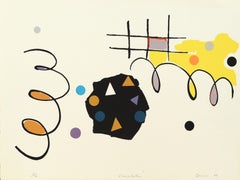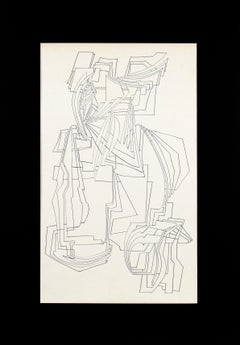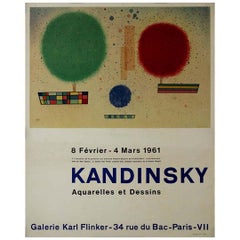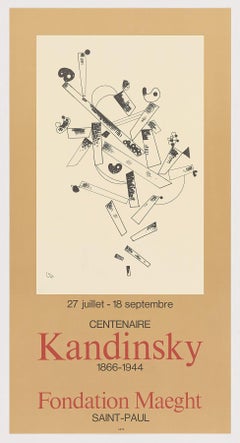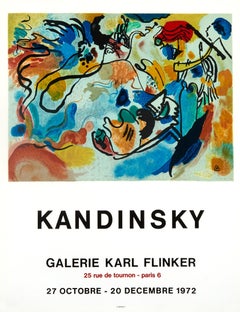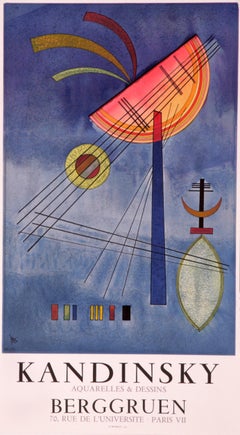Wassily KandinskyKandinsky à la Galerie Karl Flinker - 1977 Affiche d'exposition - à l'encre sur papierc. 1977
c. 1977
À propos de cet article
- Créateur:Wassily Kandinsky (1866 - 1944, Russie)
- Année de création:c. 1977
- Dimensions:Hauteur : 101,6 cm (40 po)Largeur : 71,12 cm (28 po)Profondeur : 6,35 mm (0,25 po)
- Support:
- Mouvement et style:
- Période:
- État:Poster was attached to a cardstock backing by a previous owner. Puncture holes in corners, as expected for an exhibition posted. Some mild surface artifacts from age.
- Adresse de la galerie:Soquel, CA
- Numéro de référence:Vendeur : DBH74351stDibs : LU54216704752
Wassily Kandinsky
"La couleur est un moyen d'exercer une influence directe sur l'âme", a écrit l'artiste abstrait pionnier Wassily Kandinsky. Ce peintre et théoricien d'origine russe a consacré sa vie à l'utilisation de compositions abstraites de formes et de couleurs pour exprimer des émotions profondes ainsi que pour dépeindre le langage de la musique à travers des images.
Kandinsky a participé à un moment crucial de l'histoire de l'art - le début du 20e siècle - qui a vu l'émergence de mouvements tels que le cubisme. Il a embrassé des styles tels que le surréalisme et le fauvisme et a été l'un des principaux rassembleurs de Der Blaue Reiter (le nom signifie "Le cavalier bleu" d'après une peinture de Kandinsky) en 1911, un groupe d'artistes d'avant-garde à Munich, dont Paul Klee et Franz Marc, qui ont exploré des concepts spirituels à travers leur art en réponse au matérialisme de l'époque. Kandinsky a également donné des cours de dessin analytique et de couleur au Bauhaus . Il a été nommé par le fondateur et architecte Walter Gropius pour enseigner à Weimar en 1922. Il a enseigné sur les trois sites de cette école légendaire et est resté à l'institution jusqu'à sa fermeture forcée par le parti nazi à Berlin.
L'artiste avait la particularité rare et inhabituelle de synesthésie, la capacité neurologique de percevoir les choses à l'aide de plusieurs sens. Dans le cas de Kandinsky, il s'agissait du don de "voir" la musique, et la musique apparaissait dans tous les aspects de son travail, y compris dans les titres de ses séries "Compositions", "Improvisations" et "Impressions". Il a un jour décrit l'expérience de la peinture en utilisant une métaphore musicale : "Je ne pensais guère aux maisons et aux arbres, je dessinais des lignes et des taches de couleur sur la toile avec mon couteau à palette, et je les faisais chanter aussi puissamment que je savais le faire."
Si Kandinsky n'est pas le premier artiste abstrait - le peintre à tendance mystique Hilma af Klint était et faisait de l'art non représentatif bien avant lui - il a certainement eu le plus grand impact sur l'établissement du style. Ses peintures ont inspiré des artistes tels que Jackson Pollock, Willem de Kooning et d'autres Expressionnistes abstraits. De son œuvre Untitled (First Abstract Watercolor) peinte en 1910 à ses œuvres ultérieures, en passant par sa façon unique d'utiliser la couleur et son flair pour les compositions audacieuses et expérimentales, Kandinsky est l'une des figures les plus importantes de l'art du début du 20e siècle.
Trouvez des œuvres d'art originales de Wassily Kandinsky, y compris des peintures et des tirages , sur 1stDibs.
- ExpéditionRecherche du devis...Expédition depuis : Soquel, CA
- Politique des retours
Plus d'articles de ce vendeur
Tout afficherannées 1960, Abstrait, Estampes - Abstrait
Papier, Encre, Lithographie
années 1980, Géométrique abstrait, Estampes - Abstrait
Papier, Encre, Écran
années 1980, Géométrique abstrait, Estampes - Abstrait
Papier, Encre, Écran
Milieu du XXe siècle, Géométrique abstrait, Dessins et aquarelles - Abst...
Papier, Encre
années 1980, Géométrique abstrait, Estampes - Abstrait
Papier, Encre, Écran
années 1980, Géométrique abstrait, Estampes - Abstrait
Papier, Encre, Écran
Suggestions
années 1960, Estampes et éditions
Papier, Lithographie
années 1970, Abstrait, Estampes - Abstrait
Lithographie
années 1970, Estampes et éditions
Lithographie
années 1970, Moderne, Estampes - Abstrait
Lithographie
années 1970, Estampes et éditions
Lithographie, Papier
20ième siècle, Moderne, Estampes et éditions
Lithographie
